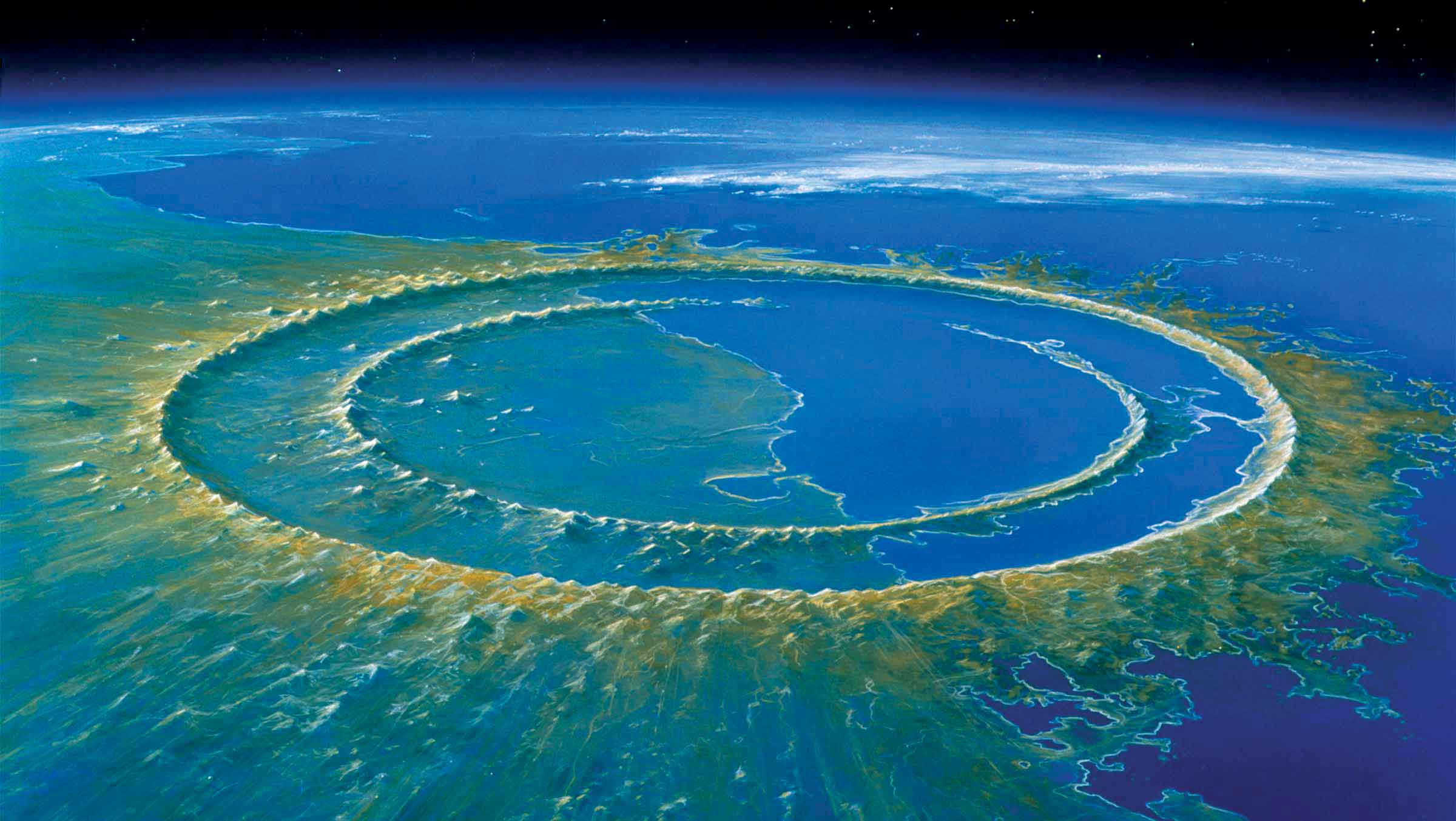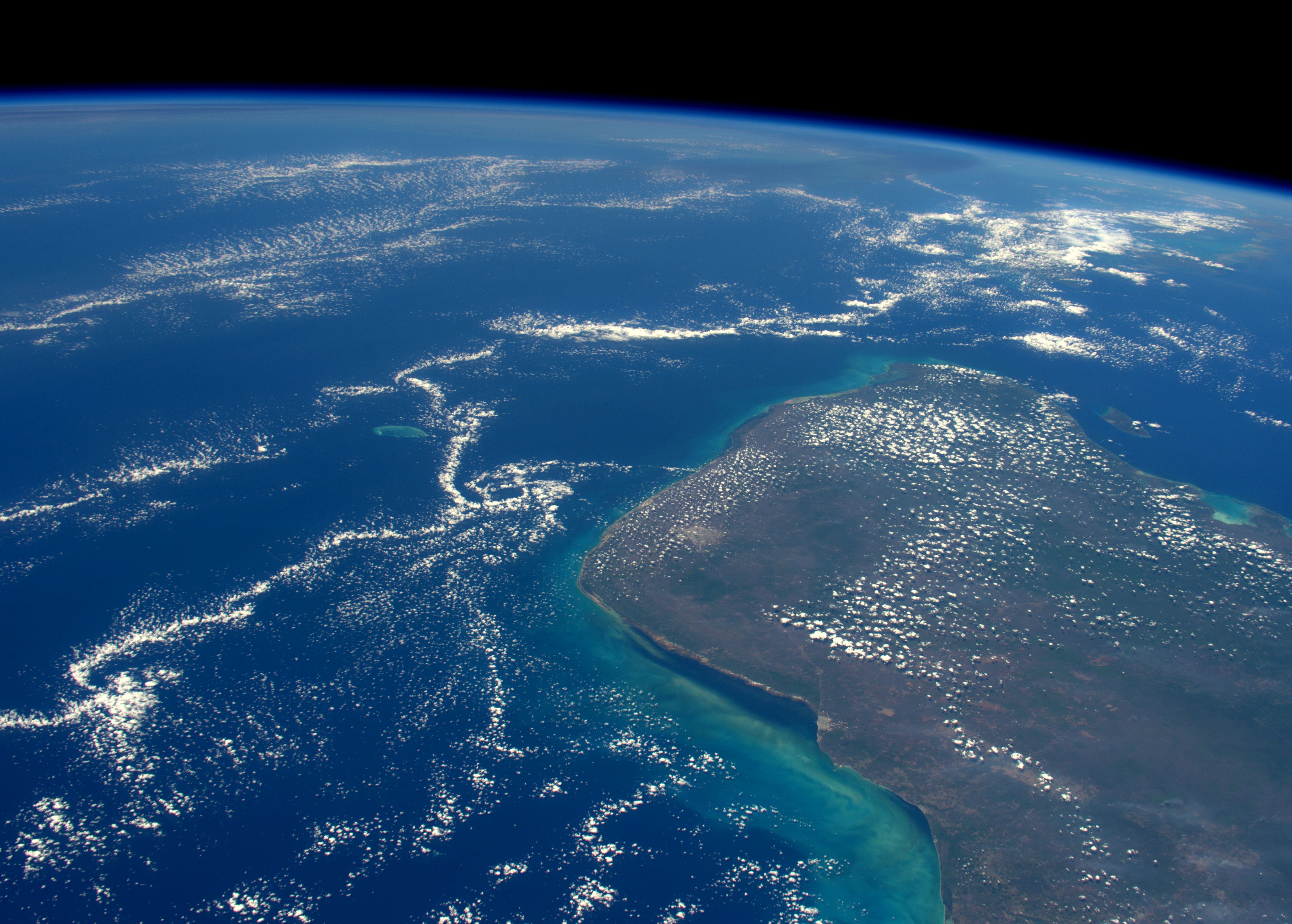Chicxulub Crater - The Ancient Impact That Changed Earth Forever
Buried deep beneath the Yucatán Peninsula in Mexico lies the Chicxulub Crater, an ancient scar left by a catastrophic event that reshaped life on Earth 66 million years ago. This massive impact crater, named after the nearby town of Chicxulub Pueblo, tells the story of a colossal asteroid or comet collision that triggered global chaos. Scientists believe this event was responsible for the mass extinction of dinosaurs, setting the stage for the rise of mammals and eventually humans.
While the crater remains largely hidden from view, its effects are etched into the planet's history. The moment the asteroid struck, it unleashed a devastating force that vaporized rock, triggered wildfires, and sent tsunamis across the globe. Today, researchers continue to uncover new insights about this pivotal moment in Earth's history, piecing together the evidence from core samples and geological studies.
So, how did this colossal event shape our world? What lessons can we learn from the Chicxulub Crater about the fragility of life on Earth? In this article, we'll explore the science behind the impact, its consequences, and why it matters to us today. Let’s take a closer look at the evidence and discoveries that have emerged over the years.
Table of Contents
- What Is the Chicxulub Crater All About?
- How Did the Chicxulub Crater Form?
- What Evidence Exists for the Chicxulub Crater?
- Why Is the Chicxulub Crater Important?
- Chicxulub Crater - Could It Have Caused the Extinction of Dinosaurs?
- What Are the Chicxulub Crater's Effects on the Planet?
- Chicxulub Crater - Why Does It Matter to Us Today?
- How Do Scientists Study the Chicxulub Crater?
What Is the Chicxulub Crater All About?
Alright, let’s start with the basics. The Chicxulub Crater is essentially a massive dent in the Earth's surface, located near the Yucatán Peninsula in Mexico. It’s not something you can see easily because most of it is hidden underwater and buried beneath layers of sediment. However, its presence is undeniable. Scientists estimate that the crater stretches about 180 kilometers (roughly 112 miles) across and plunges around 20 kilometers (12 miles) deep. That’s a pretty big hole!
In a way, it’s almost like a giant fingerprint left behind by a cosmic visitor. This fingerprint tells us a lot about what happened when the asteroid or comet slammed into the Earth. It wasn’t just a random collision; it was an event that had far-reaching consequences for life on the planet. The crater is named after the nearby town of Chicxulub Pueblo, which is where researchers first began to piece together the evidence of this ancient impact.
How Did the Chicxulub Crater Form?
So, how exactly did this enormous crater come into being? Well, it all started with a space rock—either an asteroid or a comet—that was probably about 10 kilometers (6 miles) wide. Now, that might not sound like much compared to the size of the Earth, but trust me, it was plenty big enough to cause some serious damage. When it hit, the energy released was equivalent to billions of nuclear bombs going off at once.
The impact completely obliterated the surrounding landscape, sending debris flying in every direction. It also triggered massive fires, earthquakes, and a series of tsunamis that flooded coastal regions. In fact, the force of the impact was so powerful that it literally vaporized much of the rock at the impact site. The result? A massive crater that’s still visible today, even though it’s mostly hidden from view.
What Evidence Exists for the Chicxulub Crater?
Now, you might be wondering how scientists figured out that this crater even exists. After all, it’s buried deep underground and underwater. Well, it’s a combination of things. First, there’s the geological evidence. Researchers have found layers of sediment around the world that contain high levels of iridium, an element that’s rare on Earth but common in asteroids. These layers date back to about 66 million years ago, which matches the estimated age of the Chicxulub impact.
Then there are the core samples. Scientists have drilled into the Earth to collect rock samples from the crater site. These samples show evidence of melted rock and other signs of a massive impact. Additionally, radar imaging and satellite data have helped to map the crater’s structure, revealing its size and shape. All of this evidence points to one conclusion: something really big hit the Earth a long time ago, and it left behind the Chicxulub Crater.
Why Is the Chicxulub Crater Important?
Here’s the thing about the Chicxulub Crater—it’s not just some random hole in the ground. It’s a crucial piece of Earth’s history. This impact event is believed to have caused the mass extinction that wiped out the dinosaurs, along with many other species. Without it, the world might look very different today. In fact, some scientists argue that if this asteroid hadn’t hit, mammals—and by extension, humans—might never have had the chance to thrive.
It’s also important because it helps us understand the risks of asteroid impacts. Sure, it’s unlikely that another asteroid of this size will hit the Earth anytime soon, but it’s still something we need to be aware of. Studying the Chicxulub Crater gives us valuable insights into how these events occur and what their effects might be. In other words, it’s not just about the past—it’s about preparing for the future, too.
Chicxulub Crater - Could It Have Caused the Extinction of Dinosaurs?
Let’s talk about the big question: did the Chicxulub impact really cause the extinction of the dinosaurs? Well, the evidence strongly suggests that it did. When the asteroid hit, it triggered a chain reaction of events that made life on Earth pretty difficult for pretty much everything. First, there were the fires and tsunamis, which wiped out entire ecosystems. Then came the acid rain and the dust cloud that blocked out the sun, causing temperatures to plummet.
For dinosaurs, which were adapted to warm climates, this sudden cooling was devastating. Plants died off, herbivores starved, and carnivores followed suit. It was a domino effect that ultimately led to the extinction of around 75% of all species on the planet. Of course, there are still debates among scientists about whether the asteroid alone was responsible or if other factors, like volcanic activity, played a role. But one thing’s for sure—the Chicxulub impact was a major contributor.
What Are the Chicxulub Crater's Effects on the Planet?
Alright, so we’ve talked about the immediate effects of the impact, but what about the long-term consequences? Well, they were pretty significant. The asteroid not only wiped out the dinosaurs but also reset the evolutionary clock for life on Earth. Mammals, which had been small and relatively insignificant up until that point, suddenly found themselves with a lot more room to grow and evolve. Over time, this led to the rise of primates, and eventually, humans.
But the effects weren’t just biological—they were geological, too. The impact reshaped the Earth’s surface, creating new landforms and altering the course of rivers. It even changed the climate, contributing to the cooling trend that eventually led to the Ice Ages. In short, the Chicxulub impact was a game-changer for the entire planet, affecting everything from the tiniest microorganisms to the largest landmasses.
Chicxulub Crater - Why Does It Matter to Us Today?
So, why should we care about something that happened 66 million years ago? Well, for one thing, it’s a reminder of how fragile life on Earth can be. A single event, no matter how unlikely, can have catastrophic consequences for the planet. This knowledge is especially relevant today, as we face challenges like climate change and biodiversity loss.
Additionally, studying the Chicxulub Crater helps us understand the risks of asteroid impacts and how we might mitigate them in the future. It’s not just about avoiding extinction—it’s about ensuring that we can continue to thrive as a species. By learning from the past, we can better prepare for the challenges of the future. In a way, it’s like looking at the Earth’s history as a kind of roadmap for survival.
How Do Scientists Study the Chicxulub Crater?
Finally, let’s talk about how scientists actually study the Chicxulub Crater. As you might imagine, it’s not an easy task. Since the crater is mostly hidden from view, researchers have to rely on indirect methods to gather data. One of the most common techniques is drilling, where they extract core samples from the Earth to analyze the layers of rock beneath the surface.
They also use radar and satellite imaging to map the crater’s structure and identify features like sinkholes that are associated with the impact. By combining these methods with computer modeling and laboratory experiments, scientists can reconstruct the events of that fateful day 66 million years ago. It’s a bit like solving a giant puzzle, piecing together clues from different sources to form a complete picture.
Anyway, that’s a wrap on our exploration of the Chicxulub Crater. We’ve looked at what it is, how it formed, why it matters, and how scientists study it. Hopefully, this gives you a better understanding of this incredible event and its lasting impact on our planet. The next time you hear about asteroid impacts or mass extinctions, you’ll know exactly what they’re talking about!

Drilling Into the Chicxulub Crater, Ground Zero of the Dinosaur

Landscape History of the Chicxulub Crater - Revista Landuum

ESA - Yucatan Peninsula – Site of the Chicxulub impact crater